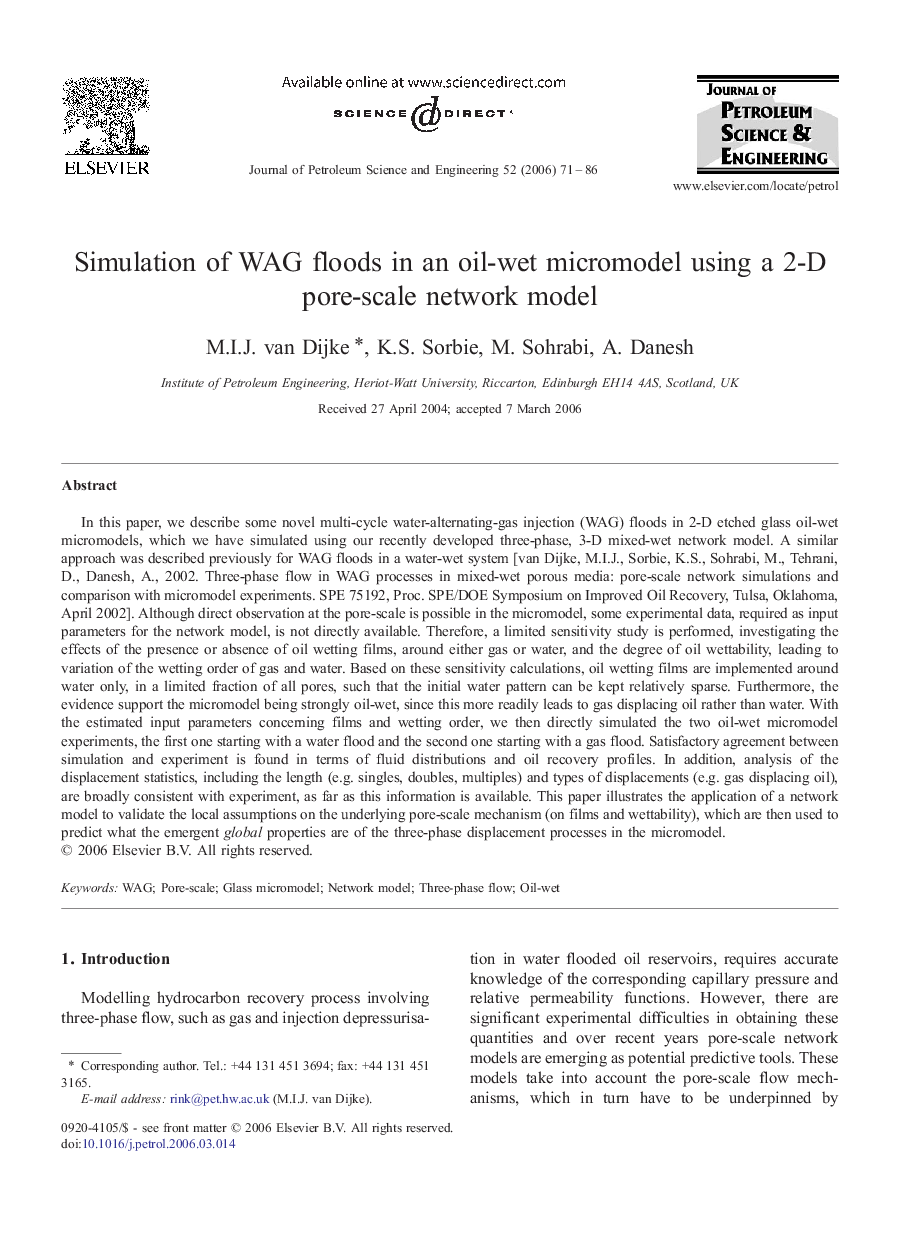| Article ID | Journal | Published Year | Pages | File Type |
|---|---|---|---|---|
| 1756462 | Journal of Petroleum Science and Engineering | 2006 | 16 Pages |
In this paper, we describe some novel multi-cycle water-alternating-gas injection (WAG) floods in 2-D etched glass oil-wet micromodels, which we have simulated using our recently developed three-phase, 3-D mixed-wet network model. A similar approach was described previously for WAG floods in a water-wet system [van Dijke, M.I.J., Sorbie, K.S., Sohrabi, M., Tehrani, D., Danesh, A., 2002. Three-phase flow in WAG processes in mixed-wet porous media: pore-scale network simulations and comparison with micromodel experiments. SPE 75192, Proc. SPE/DOE Symposium on Improved Oil Recovery, Tulsa, Oklahoma, April 2002]. Although direct observation at the pore-scale is possible in the micromodel, some experimental data, required as input parameters for the network model, is not directly available. Therefore, a limited sensitivity study is performed, investigating the effects of the presence or absence of oil wetting films, around either gas or water, and the degree of oil wettability, leading to variation of the wetting order of gas and water. Based on these sensitivity calculations, oil wetting films are implemented around water only, in a limited fraction of all pores, such that the initial water pattern can be kept relatively sparse. Furthermore, the evidence support the micromodel being strongly oil-wet, since this more readily leads to gas displacing oil rather than water. With the estimated input parameters concerning films and wetting order, we then directly simulated the two oil-wet micromodel experiments, the first one starting with a water flood and the second one starting with a gas flood. Satisfactory agreement between simulation and experiment is found in terms of fluid distributions and oil recovery profiles. In addition, analysis of the displacement statistics, including the length (e.g. singles, doubles, multiples) and types of displacements (e.g. gas displacing oil), are broadly consistent with experiment, as far as this information is available. This paper illustrates the application of a network model to validate the local assumptions on the underlying pore-scale mechanism (on films and wettability), which are then used to predict what the emergent global properties are of the three-phase displacement processes in the micromodel.
